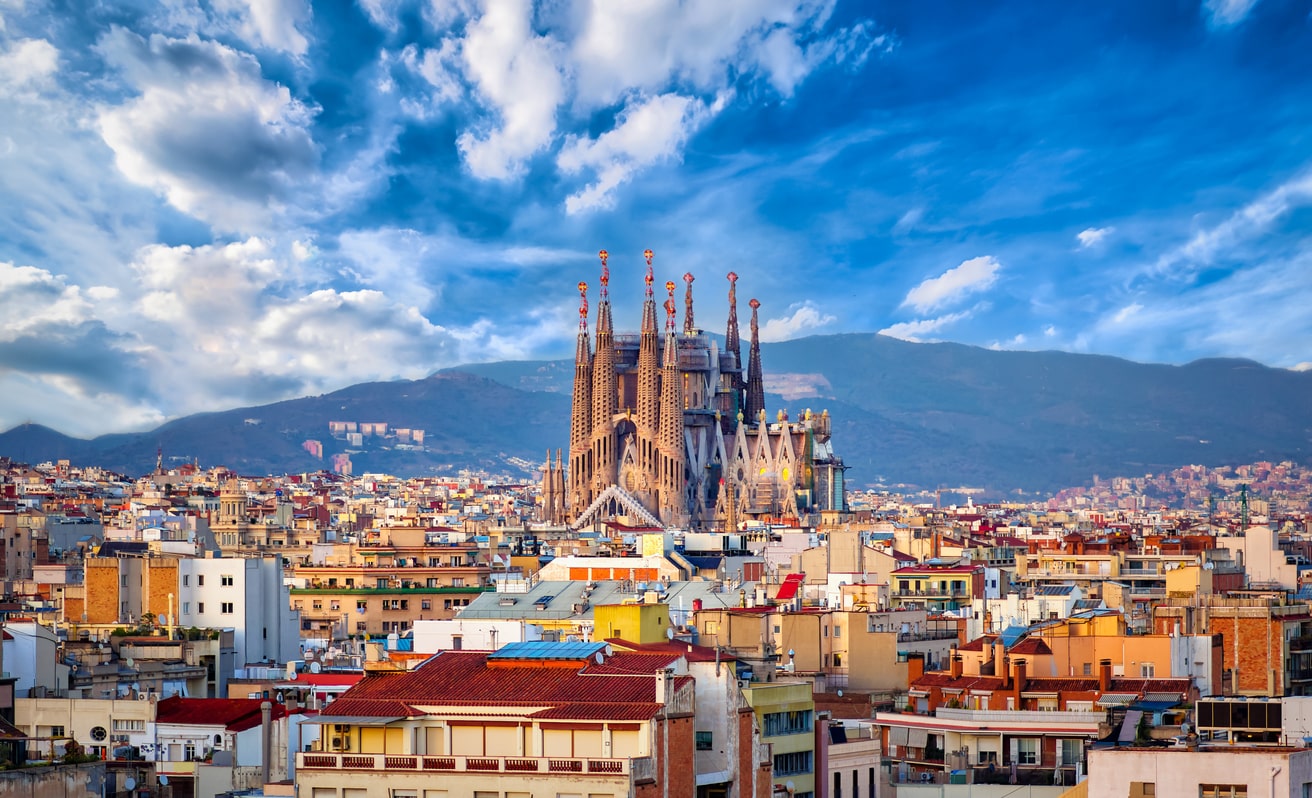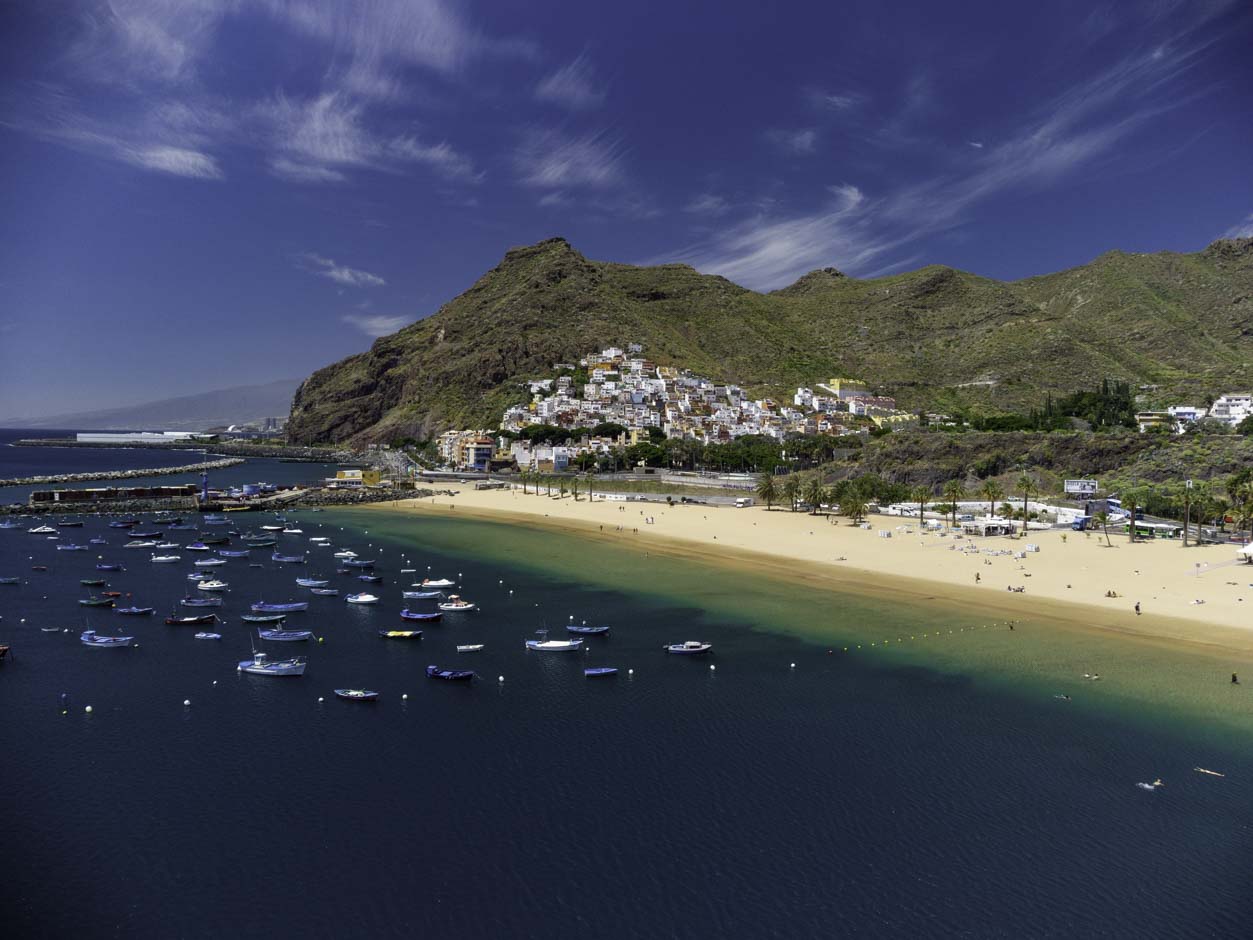Lisbon cruise port offers a gateway to this fantastic Portuguese city – our guide has the down-low on what to see, do and eat there.
Lisbon cruise port offers a gateway to this fantastic Portuguese city – our guide has the down-low on what to see, do and eat there.
Words by Sarah Rodrigues
Lisbon cruise port – located on the River Tagus – ensures Portugal’s capital gives passengers much to feast their eyes upon, even before they disembark: so be sure to be on deck when you arrive!
Most large cruise ships dock in the new Lisbon Cruise Terminal: Jardim do Tabaco or Santa Apolónia but if all berths in this modern terminal are taken, cruise ships can be found in old Lisbon port: Alcântara and Rocha Conde de Óbidos.
Once you’re on the ground, Lisbon has a wealth of attractions within a short walking distance of the terminals, so make the most of stretching your legs in a city that’s colourful and friendly, as well as steeped in history, bristling with fabulous architecture and bursting with delicious food.
Yes, it takes 10 minutes to walk into Lisbon from the cruise port (known locally as Porto de Lisboa) to Terreiro do Paço and the Baixa neighbourhood, while the Alfama District is just opposite the terminal. It takes around 30 minutes to walk from the old Lisbon cruise terminal into the city.
The new port of Lisbon cruise terminal to the city centre is only around 1km so it’s easy for passengers to walk into town – although transport is available.
The old cruise ship port Lisbon to the city centre is just under 3km. However, it’s likely your cruise line will lay on a shuttle bus to make this journey easier or you can take a taxi at times that suit you.
Praia de Algés is the closest beach to Lisbon city centre and just under half an hour’s drive away (but currently faces various development plans to improve the landscaping). More popular are Praia da Torres and Praia de Carcavelos – 45 and 50 minutes drives away respectively from Lisbon port cruise ships.
Equidistant and also popular is the Costa da Caparica beach, on the other side of the Tejo River.
The drive between Lisbon airport and the cruise port of Lisbon is around 20 minutes, with the new cruise port just over 8km from the airport. Public transport is also available while your cruise line may organise transfers for you for optimum ease.
Visible from almost anywhere in the old town, Castelo de São Jorge and its hilltop location have both been key in Lisbon’s history, in roles from military barracks to royal palace. Now a national monument, holidaymakers on cruises to Lisbon can visit the castle with ticketed entrance, giving you time to explore its vast grounds, eleven towers and on-site museum. Some of the best views of the city are to be had from this vantage point, so spare some time to take them in when you visit Lisbon.
Facing the harbour and within reach of the palace, this large square – previously called Terreiro do Paço (the Royal Yard) was once the area in which boats unloaded their cargo and dignitaries disembarked. Destroyed in the 1755 earthquake, the square [below, left] was rebuilt and given its current name – Commerce Square – in recognition of the merchants and financiers whose efforts had helped to rebuild the city.
There are lots of historical and cultural gems to admire. Sculpted figures and relief design elements abound here, making it a pleasant place to stroll and take in the details, even if you’re not stopping to eat at one of the restaurants in the arches. At the far side of the square from the Tagus River, the top of the Triumphal Arch can be accessed (with a ticket) via elevator; from here, you’ll have close-up views of its sculptures and a bird’s eye view of the square. If you don’t want to splurge on a shore excursion, why not research free Lisbon walking tours ahead of your trip?
The azulejos – painted ceramic tiles – of Portugal are ubiquitous in Lisbon and will provide many photo-worthy moments. This main train station makes them all the more compelling because they provide a beautifully calming counterpoint to the busy comings and goings of passengers and trains. You may not have time to jump on a train (the station serves both domestic and international routes) on your Lisbon cruise but the spectacle and grandeur make this a worthwhile pitstop; visit by night, and the station is illuminated, creating another spellbinding experience.
No time for a train ride on your cruise to Lisbon? Lisbon’s dinky yellow tram [above, right] is just as much of a joyful experience. Hop aboard the Number 28, which trundles through the city’s historic centre, starting at Largo Martim Moniz and continuing to São Vicente de Fora Church. Hop on and off at any point – the route takes in some of the city’s most charming squares, as well as churches and shopping streets.
Fado means ‘fate’ and is an essential and throat-lumping part of Portuguese culture, with the trembling vocals of singers soaring over and among all that it is to be fallible and human. Several bars – many of which are located in Alfara and Bairro Alto, and include A Severa and O Faio – offer regular and authentic Fado performances, but even if you can’t make one of these, make tracks for the Fado Museum, where incisive and interactive displays chart the history of this uniquely Portuguese form of musical expression.
Few people come to Lisbon – or indeed, Portugal – without daydreaming about smothering their homes and living spaces with a colourful kaleidoscope of azulejos. This, of course, may not be feasible – but a visit to the ‘Tile Museum,’ located within the cloisters of a 16th-century monastery, definitely is. Here, visitors can lose themselves in examples of the decorative tiles seen, in various incarnations, throughout the city, including those influenced by Moorish, Spanish, Flemish and Italian designs.
Built in the 12th century, this building is fascinating, no matter whether you lean towards architecture, religion or history. Built in the 12th century, its facade and towers are more squat and solid than some of the grandiose styles of other European architecture, and the interior is less opulent, although crammed with statues and highly decorated altars.
The disused cloisters, located to the back of the structure, have been partially excavated, revealing the remnants of the mosque upon which the Cathedral was built. It’s also said that the 12th-century Saint Anthony, while studying here, was tempted by the Devil and resisted him by drawing the sign of the cross, which can now be seen on the wall of the stairs leading up to the choir.
Top tip for Instagrammers cruising to Lisbon? Loiter outside a while – the Number 28 tram runs past here, and its bright yellow against the background of the Cathedral makes a great snap.
Depending on how much time you have in the cruise ship port, Lisbon, you may wish to swing by Sintra, located about a half-hour drive from Lisbon. Colourful, fairytale-like castles stud the skyline, surrounded by thickly forested hills that descend towards the blue of the Atlantic. With lush gardens and decorative interiors, Sintra has been designated a UNESCO World Heritage Site, and you could easily spend hours here, although half-day trips are also available.
Located on the North Bank on the Tagus, this impressive work of sculpture [above, right] is a testament to Portugal’s Golden Age of discovery, in the 15th and 16th centuries. It was originally created in 1940 as a temporary structure for the Portuguese World Exhibition and was reconstructed in 1960 to mark the fact that it was 500 years since the death of Henry the Navigator (Infante Dom Henrique). This time, the structure was permanent, masoned from concrete, stone and limestone.
You’ll see – and smell – them everywhere. Portuguese custard tarts [above, left] as they’re commonly referred to in English, are tantalising confections of flaky pastry, firm but creamy custard hearts and dark-spotted caramelised tops. Pastéis de Belem, decked out in gorgeous blue and white tiles (azulejos) see crowds of customers lining up to try its version of the pastry, which has become so famous that they’re frequently referred to as being in a class of their own, and given the name pastéis de Belem. Accompanied by a milky coffee, these tarts (which are based on an ancient monastic recipe) have to be tried to be believed: you’re bound to leave with a boxful to take back onboard.
Made from spirit-soaked sour cherries, and enhanced by the addition of spices such as cinnamon, this liqueur must be sampled while you’re exploring Lisbon. Most of the traditional bars serving it are hole-in-the-wall establishments, where you’ll pay no more than a few euros for a shot, which is typically consumed on the pavement outside. Listen out for the bartenders asking you whether you want your drink sin or com ‘elas’ – with or without cherries. If you opt for ‘with,’ it’s customary to quaff the drink, suck the cherries and spit the pits onto the pavement. One of the most iconic places to enjoy this drink is A Ginjinha, which dates back to 1840.






Become the first to know about win-a-cruise competitions, on-trend holiday inspo and don’t-miss travel advice from the experts.



 United Kingdom
United Kingdom USA
USA